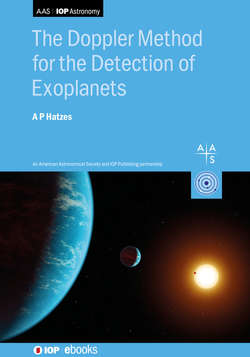Читать книгу The Doppler Method for the Detection of Exoplanets - Professor Artie Hatzes - Страница 28
На сайте Литреса книга снята с продажи.
2.3.3 Bias Level
ОглавлениеThe bias level of a CCD is an electronic offset that is artificially applied to the data at the time the CCD is read out. Its purpose is to ensure that the analog-to-digital converter (ADC) always receives a positive signal. This bias level must be removed from the data values if these are to reflect the true number of counts (photons) recorded by each pixel.
All astronomical CCD detectors have a so-called overscan region of the chip that is masked so that it receives no light during an exposure (Figure 2.13). The overscan region can be easily found by taking an exposure of a lamp source and plotting along a row or column to see where the intensity sharply drops (seen as a step function). Typical bias levels are a few hundred to about a thousand ADUs.
The first step of any CCD reduction process is to remove the bias level. The bias frame is simply an observation with the CCD shutter closed (dark frame) with a zero exposure time. The bias levels can be removed using several methods:
Measure the count level in the overscan region and subtract this value from each frame. The disadvantage of this method is that it will not remove any structure in the bias level if some are present across the CCD.
Take a series of several (>10) frames and compute a “master bias,” consisting of a frame having the average (or better yet, the median) value for each pixel. This master bias is then subtracted from each science frame. The disadvantage is that this will introduce some noise into the data frames.
Take a single bias frame, or the median of several, and fit a surface to it using a low-order, two-dimensional polynomial. Subtracting this fit will not introduce noise into your data frame. This can be done on the master bias and is the preferred method.
Most CCDs in use today are relatively stable so that one can take the bias frames at the beginning or end of the night. The bias level is the first indication of problems with the CCD, so it is a good idea to monitor the stability of the CCD by checking it regularly. This is easily done by looking at the counts in the overscan region. The author once had the experience where the bias level was seen to change throughout the night, but this only became evident during the reduction process after the observing run. Fortunately, the overscan region provided a “real time” measurement of the bias level. We will see in Chapter 12 that a significant change in the bias level will be an early indication that something is amiss in your detector.
